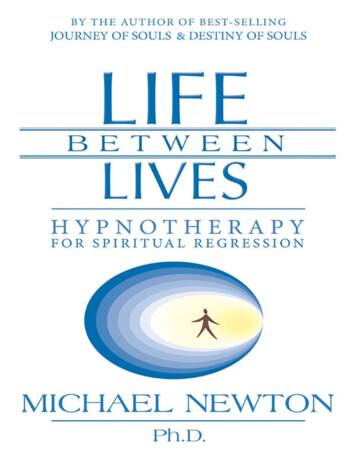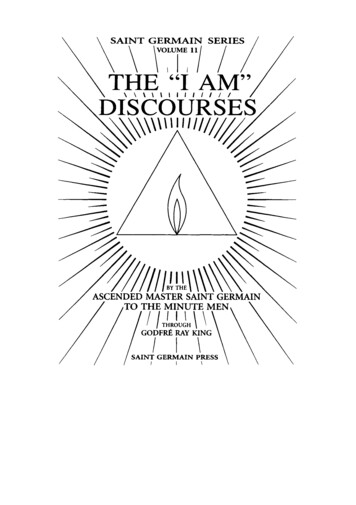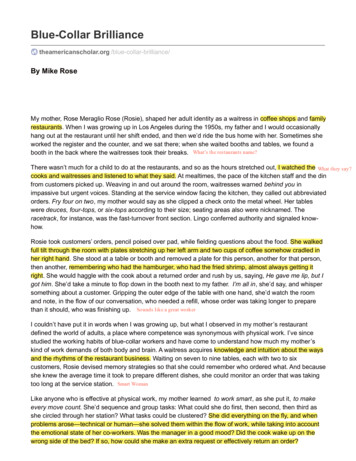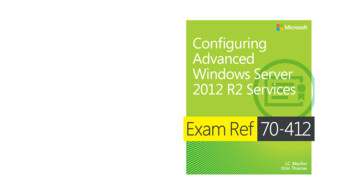
Transcription
About the AuthorDr. Newton is a counseling psychologist, master hypnotherapist, and teacher. Hehas been on the faculty of higher educational institutions and has served as agroup therapy director for community mental health centers and spiritualrenewal organizations in cooperation with hospitals and social service agencies.Now retired after forty years of private practice, he is considered a pioneer inuncovering the mysteries of our life between lives through the development ofhis own hypnosis techniques.He is the author of the best-selling books Journey of Souls and Destiny of Souls(winner of the most outstanding metaphysical book award of the year at the theannual Book Exposition of America in 2001), which have been translated intoover thirty languages. Dr. Newton received the annual award for the most uniquecontribution by a hypnotherapist from the National Association of TranspersonalHypnotherapists. He has been conferred as a Chevalier of Honor by the Order ofConstantine for international education.Dr. Newton is the founder of the Newton Institute for LBL Hypnotherapy,which is an international organization designed for the purpose of trainingexperienced hypnotherapists in the techniques of life between lives regression.He devotes a great deal of time directing this training program, as well asappearing on numerous radio and TV talk shows and public expositions. He has
an international reputation as a thought-provoking speaker. Visit him online atwww.newtoninstitute.org.
Llewellyn PublicationsWoodbury, Minnesota
Copyright InformationLife Between Lives: Hypnotherapy for Spiritual Regression 2004 byMichael Newton, Ph.D.All rights reserved. No part of this book may be used or reproduced inany matter whatsoever, including Internet usage, without writtenpermission from Llewellyn Publications, except in the form of briefquotations embodied in critical articles and reviews.As the purchaser of this e-book, you are granted the non-exclusive,non-transferable right to access and read the text of this e-book onscreen. The text may not be otherwise reproduced, transmitted,downloaded, or recorded on any other storage device in any form orby any means.Any unauthorized usage of the text without express writtenpermission of the publisher is a violation of the author’s copyright andis illegal and punishable by law.First e-book edition 2013E-book ISBN: 9780738717180First EditionNinth Printing, 2010Book design and editing by Rebecca ZinsCover design by the Llewellyn Art DepartmentCover logo The Newton Institute for LBL HypnotherapyLlewellyn Publications is an imprint of Llewellyn Worldwide Ltd.Llewellyn Publications does not participate in, endorse, or have anyauthority or responsibility concerning private business arrangementsbetween our authors and the public.Any Internet references contained in this work are current atpublication time, but the publisher cannot guarantee that a specific
reference will continue or be maintained. Please refer to thepublisher’s website for links to current author websites.Llewellyn PublicationsLlewellyn Worldwide Ltd.2143 Wooddale DriveWoodbury, MN 55125www.llewellyn.comManufactured in the United States of America
DEDICATIONThis guidebook of life between lives hypnosis methodology is dedicated to all hypnotherapypractitioners who access the souls of their clients through the use of spiritual regression, and tothose who seek enlightenmentabout their spiritual life.
ContentsForeword by Dr. Arthur RoffeyIntroductionPART ONEThe Initial InquiryAddressing Client Belief SystemsPART TWOPreparation for Spiritual RegressionPersonal Demands on theSpiritual RegressionistImportance of Training and ExperiencePracticing Life Between Lives HypnosisThe Intake InterviewClient PreconceptionsA Client’s Cast of CharactersFinal Instructions to the ClientPART THREEBeginning the LBL Hypnosis SessionInduction with the LBL ClientStages of HypnosisDeepening and VisualizationPacing and Voice UsageFinal Hypnosis InstructionsBefore Regression
Moving Backward in TimeInside the Mother’s WombThe Transition Into a Past LifeChecking Conscious InterferencePART FOURThe Mental Gateway Into the Spirit WorldPast Life Death ScenesDesensitizing TraumaInitial Visualizations of the Soul StateInstructions for Soul DeparturePhrasing Questions at the GatewayThe Unresponsive LBL ClientOvercoming Specific Typesof Client BlockingBlocking by the Client’s GuideVisions of Light and DarknessWhile CrossingFirst Contact with SpiritsInteraction with Welcoming SpiritsStation Stops for the Incoming SoulOrientation with GuidesPART FIVELife Between LivesReturning Clients to Their Soul GroupIdentification of Soulmates
Recognition of Soul ColorsGathering Information on a Soul GroupPrimary SoulmatesThe Inner Circle andMissing Soul CompanionsSoul EnergyExamining Character Types in GroupsClients in the Intermediateand Advanced LevelsTaking Clients Before Their CouncilTherapeutic OpportunitiesDuring Council VisitationsReviewing Past Life IncarnationsSurveying Other Spirit World ActivitiesLife and Body SelectionConnections Between Body and SoulTherapeutic Benefits ofSpiritual RegressionPART SIXClosing the SessionPreparation for EmbarkationCompleting the Spiritual RegressionAwakening the LBL ClientThe Exit InterviewConclusions
Appendix
FOREWORDFor the past few years, Dr. Michael Newton has directed the training ofprofessional hypnotherapists in his techniques encompassing the art of lifebetween lives spiritual regression (LBL). I was very fortunate to be among hisfirst group of trainees who were certified in the detailed methodology of takingclients into their immortal existence as souls. My own background involvedtraining as a traditional psychotherapist and later as a hypnotherapist specializingin Health Psychology.Ten years ago, I came across Dr. Newton’s eloquently written first book,Journey of Souls, and later his second book, Destiny of Souls, both reporting onthe spiritual terrain between our lives that went far beyond past life regression. Ifelt they were among the most important works ever published in theprofessional field of Regression Hypnotherapy and, indeed, in all ofmetaphysical literature. Dr. Newton’s contributions are not speculative. Hisinsights are derived from personally facilitating over 7,000 LBL clients into theirspiritual life between physical incarnations on Earth. In my own practice, I amamazed by the revelations that my clients experience and the effect thesespiritual observations have upon their values, choices, and life patterns in a hereand-now incarnation.Now that he has retired from active practice, Dr. Newton has written achronicle detailing the methods he developed in over three decades of spiritualregression practice to insure that the next generation of LBL therapists areproperly informed and can expand upon his groundbreaking work. Whether youare a professional counselor skilled in regression hypnotherapy, or are simplyinterested in expanding your therapeutic work with clients to include the mostimportant aspect of their being—their spirit—this book will be a valuableresource.
And, if you are not a therapist but a person interested in how Dr. Newton wasable to achieve the remarkable results described in his books, perhaps with theidea of experiencing a personal LBL regression yourself, you will find LifeBetween Lives a source of valuable perceptions into the methods and thoughtprocesses of a pioneer in spiritual discovery. Much more than a technical manualof methodology, this book will stimulate personal reflection about the marvels ofa multidimensional creation and of our part in it, both as a soul and as anincarnated human being.—ARTHUR E. ROFFEY, PH.D. D.D.[contents]
INTRODUCTIONLife Between Lives: Hypnotherapy for Spiritual Regression represents overthree decades of personal research and the development of clinicalhypnosis techniques helping clients access their soul memories about theafterlife. The means of achieving a superconscious trance state to recall one’simmortal existence is a key element of this book. With heightened perception,ordinary people are able to find their own answers to the age-old questions of“Who am I?” “Why am I here?” and “Where do I come from?”This is primarily a “how to” book designed as a practical step-by-step guide towhat I have found to be the most effective procedures for reaching a client’simmortal memories about their life in the spirit world. While the book isintended to be a useful methodology text for experienced hypnotherapyprofessionals, it does contain new case material not printed in my previousbooks, Journey of Souls (1994) and Destiny of Souls (2000) by LlewellynPublications. The additional case material and the questions I use to elicitspiritual visualizations should appeal to readers who enjoyed my other twoworks. The three books combined represent a trilogy of research informationinto the afterlife.It is also my hope that readers will gain a deeper understanding about theprocess of what I call spiritual regression and be encouraged to embark on a lifebetween lives session themselves with a seasoned professional.I started my career as a traditional therapist. Eventually, after I began thepractice of past life regression, I discovered the methods necessary for directinglife between lives regression. As I approached retirement, after conductingthousands of spiritual regression cases, I realized that it was time for me to begintraining other professionals in the art of LBL therapy that had proven to besuccessful over many years.
In 1999, I started working with various professional hypnosis accreditingassociations around the country who gave me approval to conduct an LBLworkshop lasting a few hours. I soon learned that at least three or four days wererequired for training others in this difficult work. Then the National Associationof Transpersonal Hypnotherapy (NATH) offered to host a conference devotedentirely to LBL methodology if I would co-direct the training.In September 2001, one week after the terrorist attacks on America, the firstworld conference for LBL certification training was held in Virginia Beach. Itproved to be an auspicious time for a new hypnosis program of spiritualexploration. This intense course consists of some forty hours of workshops,demonstrations, and supervised experiential practice sessions going far beyondthe study of past life regression. I owe NATH a debt of gratitude for theirforesight and the support they have given me in the development of this LBLconference and those that have followed.In time, I realized there was a need for an organization whose sole purposewould be the advancement of hypnosis regression into the afterlife. In 2002, Ifounded the Society for Spiritual Regression with the help of a dedicated groupof LBL hypnotherapists. This training organization is composed of certified LBLtherapists devoted to advancing the study and practice of regressing clients intothe spirit world between their lives on Earth. One of the primary goals of thesociety is to serve as a referral base for both the domestic and internationalcommunity. Our website is www.spiritualregression.org.If you are someone seeking to learn about your own spiritual history, I wouldurge you to seek recommendations in finding an experienced hypnosisprofessional with certified LBL training. If such a person is not available in yourarea, it may be necessary to travel some distance. Believe me, it’s worth theeffort. It is important to find a qualified LBL hypnosis practitioner with a passionfor helping people uncover their soul memories of the afterlife and who will besensitive to your specific needs.With spiritual regression, both past life and LBL therapy are combined. Thus,
the hypnosis facilitator should be well versed in the field of metaphysics in orderto be able to analyze the karmic influences in the client’s existence from both apsychological and historical perspective. I also suggest to members of the publicthat you arrange for a preliminary interview in your search for a skilledhypnotherapist.While this text is designed to present the foundations of my research into theafterlife in a systematic fashion, it is not my intention that spiritual regressionistsconform to a rigid sequence of hypnosis procedures. In fact, I recognize thismaterial may also be useful for those who wish to employ alternative methods toreach the spirit world. I know that each facilitator brings their own ideas, talents,and experience to the practice of LBL therapy. The application of differentapproaches to the mind can only enhance our knowledge and perspective of ourspiritual life.I will offer advice on certain issues I feel strongly about but, rather than beingtoo theoretical, I have done my best to sustain this information on a practicallevel and to simplify as much as possible the conceptual framework involvingmy hypnosis methods with clients. It is my hope that we are at the beginning ofwhat will become a worldwide movement in the twenty-first century for offeringa method that provides new spiritual insight into ourselves. The many uses ofspiritual regression can help us understand the purpose for our personalexistence and make us better for having this knowledge.[contents]
Everything that surrounds us,Everything that we brush past unknowing,Everything that we touch which is not felt,Everything that we meet unnoticingHas on us swift, surprising, and inexplicable effects.—de maupassant
THEPART ONEINITIAL INQUIRY
Addressing Client Belief SystemsBefore entering into the details of hypnosis methodology connected to thepractice of spiritual regression, I think it is fitting to consider yourapproach to questions about the afterlife. As a spiritual regressionist, you willhave clients who are in a personal quandary about their beliefs at the time oftheir first contact with you. How you respond to their respective concerns mightwell be the determining factor in their making an appointment.While a large majority of the people who wish you to help them access theirsoul memories are comfortable with their beliefs, others are conflicted byreligious teachings, concerns over the mechanics of hypnosis in reaching theirlife between lives, or they may have some skepticism about trusting themselvesto you in facilitating their mental entry into the spirit world.I begin my sessions by explaining to the unsettled potential client that it willbenefit them to enter their hypnosis regression with an open mind. I might eventell them that regardless of their belief system, their unconscious memories areprobably going to reveal a home in the spirit world that will be consistent withthe reports from everyone who has undergone spiritual regression. A skepticcould argue that this sort of reassurance is actually preconditioning the subject.Even so, after conducting thousands of life between lives hypnosis sessions, I amcomfortable with making this statement to an anxious client.When considering bias, there is also the fact that my books about the afterlifeare already public knowledge. If a potential client raises the possibility of beingswayed by having read these books, I explain that during the many years beforemy research was published I told most clients very little in advance. Either way,you will find it makes no difference. Once a subject mentally enters the spiritworld through deep hypnosis, regardless of their ideology or what I have toldthem in advance, their reports are going to be similar to everyone who wentbefore them.
I have been told by the LBL hypnotherapists I have trained that they have hadclients who never heard of me or my books who, without prompting, have alsobeen consistent in their reports of the spirit world. The differences are in the soulactivities they see clearly and those that are hazy. No two sessions are exactly thesame because each soul has a specific energy pattern for recovering storedimmortal memories and their own unique history of existence.If a potential client has reservations about metaphysical philosophy due to arigid belief system, this may have created an inner turmoil that you must addressat the outset. This person has contacted you because they do want spiritualinformation about their higher self and yet ideological reservations are holdingthem back. I often find in such cases that underneath this mental conflict liesunhappiness and dissatisfaction over how these individuals consciously view theworld and their lives. Such people have contacted you because they have finallyreached a point where they are willing to seek answers by a new approach. Inthese circumstances, an eclectic therapist can be a good sounding board foropen-ended philosophical discussions that are reflective, interpretive, andencouraging to the potential client.For example, in America, with our prevalent Christian society, you might betold, “I want to experience what Heaven is like, but I worry that I might becommitting a sin by coming to see you.” Another slant on this same questioncould be, “I think there is an afterlife, but must one believe in reincarnation inorder to be a candidate for spiritual regression?” I have had clients from cultureswhere there are strong convictions about life being deterministic, giving themlittle control over their destiny. Other societies are open- minded aboutreincarnation and fate but their rituals involve the existence of angry gods, evilspirits, and undesirable astral regions after death. Some belief systems do notallow for a soul-ego that exists in a spirit world between lives. Atheists andagnostics, of course, find it hard to accept a higher power and a grand design inthe universe. As I mentioned, regardless of ideological preconceptions in theirconscious minds, once these people are in a superconscious trance state they will
have the same soul memories about their life between lives as all your otherclients.Thoughtful people with diverse belief systems will contact you because theyare searching for meaning in their lives. They are looking for a different sort ofspirituality that is consistent and makes sense to them. Once we separate out theextremists and their radical doctrines, all religions have wonderful creeds ofcompassion, charity, and love. Yet they are also anchored by centuries ofinstitutional dogma that does not appeal to modern thinking. In my view, theworld’s great religions are too impersonal for many people. In a sense thesepowerful religions have lost much of the essence of individual spiritual contactwith the divine which gave rise to their origins. People are disturbed by thisevolution.The historian Arnold Toynbee stated that throughout the history of humankindwhen a belief system outlives its attraction as a spiritual model for people it ismodified or discarded. We live in a world that is perceived as chaotic. There arethose who believe this is of our own making, while others blame the Source thatcreated us and turn away from all faith. Over my years of private practice, I haveseen an increase in the number of people who are seeking a new spiritualawareness that is individual and unique to them without intermediaries who wishto impose their will on what they deem is spiritual.All of us have a tendency to be intolerant of people who don’t think as we do.For the spiritual regressionist, having bias toward your own truths is natural butthis should not cloud your receptiveness to ideas expressed by clients. As a lifebetween lives therapist, you want to assist the client in reaching bothunderstanding and equanimity about their existence without imposing yourvalues. Everything the client needs to know is inside their mind. Wheneverpossible you must allow them to first recognize and then interpret their ownmemories. Your understanding and positive healing energy is vital as you workto expose the client’s inner vision of their soul life. In this way you also facilitate
alignment of the subject’s vibrational soul energy to the rhythms of their humanbrains.I try to explain to my clients, who represent many philosophical belief systems,that we live in an imperfect world in order to appreciate perfection. We strive forimprovement through free will and change. Searching for inner wisdom isessential because unless we find a personal inner knowledge beyond thoseinstitutional doctrines developed by others long ago, we cannot truly be wiseabout how to live our lives today on Earth.Current truths are succeeded by higher truths in each generation, and it is thisprogression of knowledge and acute awareness of ourselves that is at the core ofexpressing our personal identity. As spiritual regressionists utilizing the power ofhypnosis, we are now blessed with a new medium of therapeutic intervention. Ifyou are able to assist people in seeing the light of divinity within themselves andfoster self-discovery, then you will have made a real contribution toward theultimate enlightenment of our race.[contents]
PREPARATIONPART TWOFOR SPIRITUAL REGRESSION
Personal Demands on theSpiritual RegressionistAt one of my workshops, I was discussing the effort required in takingpeople to their life between lives. At the first break a hypnotherapist cameup to me and said, “Thank you very much for your time, but I’m leaving. I nowrealize this work is just too difficult. I have a nice, regulated practice. Thehypnosis management requirements of spiritual regression is just not an area oftherapy I feel equipped to handle.” I told this honest person it was a good thinghe recognized these concerns now rather than later.There is no question that three to four hours of intense work, juggling manyballs at once, without rest, is demanding. Essentially, you must contend with thesimultaneous interaction of a client’s immortal soul and the mental processes oftheir current human brain. These two egos may be conflicted by disruptedintegration. An LBL facilitator must cope with this duality of the client’s mindwhile refining and adjusting long phases of spiritual imagery to support acomfortable passage. To do this you must constantly track their mental journeythrough the geography of the spirit world. This is called mapping.The motivations, fears, self-image, and expectations of your client will bedetermined by the physical, emotional, and mental makeup of their host body.These elements of temperament are influenced by what I call “the I signs of thesoul”: insight, intuition, and imagination. While your hypnosis subject is tellingyou about their spiritual life, they are communicating this information throughtheir current mortal body. This can be both confusing and gut-wrenching forthem. As the drama of the afterlife unfolds in the mind of the client, theirtranspersonal view of the other side is affected by how well they can face truthsabout their real self.In addition to everything else, you will also be required to concentrate on themany previous karmic experiences your client has had in other bodies so they
will comprehend patterns of cause and effect that affect their life today.Practicing LBL therapy will increase your past life regression skills greatly asyou move from life to life using the spirit world as a bridge. You may berequired to alternate both permissive and authoritarian hypnosis techniqueswhile shifting back and forth between the client’s past lives, soul experiences,and current life. Much depends upon their receptivity, which may vary from pastlife to spirit world settings.Your task as a spiritual regressionist is to help the client manage theirvisualizations by allowing them to bring all this information into focus so thatthey can see relationships by truly understanding their soul and purpose in lifeand thus be empowered by their session. As an LBL facilitator, this effort can bearduous and requires both skill and tenacity. Certainly we don’t engage inpersonal attachments, but it is a cold therapist who does not feel compassion andempathy for a client who may be going through a difficult time recounting all thereasons why they are in their current body and what their guides and mastershave to tell them. No motivated, caring hypnotherapist can remain detached inthis work. After a demanding spiritual regression session I usually find myselfdrained. Clearing my head with hard exercise in the mountains helps me a greatdeal.
Importance of Training and ExperienceMy LBL training classes have a mixture of licensed therapists and certifiedhypnosis professionals. Typically, a substantial number of hours in basicand advanced hypnotherapy training is required, along with a few years ofprivate practice. Having some background in past life experience is of greatbenefit before tackling the demanding work of a spiritual regressionist. One doesnot need to be licensed as a psychologist, psychotherapist, or counselor to be askilled hypnosis facilitator. However, when working with troubled clients, somebackground in counseling guidance is invaluable.Ethically, therapists are expected to recognize their level of competence andprofessional qualifications and not employ treatment procedures that are beyondthe scope of their training. To all practitioners of spiritual regression who assistclients in seeking the truth about themselves, I would say the more exposure toacademic training and professional experience, the better.The issue of self-awareness is important to you as an LBL therapist since itdirectly relates to your influence on the client. Your energy is affected by yourown intuition, motivation, and integrity. I have great respect for Taoistphilosophy. The Taoists believe that inspiration occurs when one’s consciousmind gets out of the way of their natural unconscious energy. In a sense, ourcosmic chi (energy) is what brings harmony and clarity to the body. Having akeen internal focus also makes you a better therapist.The best regressionists have a perception that allows them to know somethingwithout the use of conscious reasoning. These therapists sense things atappropriate moments when working with people. During LBL therapy it ispossible for both facilitator and subject to receive help from their respectiveguides, and these moments should be recognized, especially in the behavioralareas of making choices and problem solving.
I believe it is possible to train yourself to recognize and analyze symbols whichillustrate spirit-world experiences that cannot be defined in a material way.These metaphors may be symbolic of something on Earth that has applications toa visualized spirit-world event. Frankly, there are times during a session when Ifeel I am somewhat telepathic. This can be a hindrance when I don’t consciouslyblock what I am thinking at critical moments with a client who can pick up mythoughts.I find daily meditation and controlled breathing to be helpful in my LBLpractice. In yoga, prana refers to the life force or energy that is manifested ineach of us through our breath. As a spiritual regressionist, I manipulate mybreathing at times during a session in an attempt to extend my mind into a higherstate of consciousness. I may even enter into a self-induced light trance state tobe more open to the spiritual forces I feel around me.Please understand that prana is not the breath itself nor the oxygen involvedwith breathing but the energy connected to the breath. It is a connection to theenergy of all living things as a universal life force. I have worked to train myselfto seek the energy pathways necessary to reach a particular client’s mind whileasking for help from my guide and my subject’s guide. I begin by opening mymind and asking for guidance. In this way I try to receive information and notsend it. What I do send to my clients are messages of confidence andreassurance.The key to being a good therapist is to listen. Another is allowing your client tofirst interpret their own metaphoric symbols based upon what they areexperiencing before you engage in your own interpretations. There is a delicatebalance between listening and questioning. To know when to speak and when tobe quiet is not easy to teach students. In LBL work one must learn when togently assist a client in understanding a visualization after they have spent timeanalyzing what they are seeing themselves. This comes with training andpractice, and along the way this exercise and your own creativity may enableyou to become more intuitive.
Practicing Life Between Lives HypnosisSince the publication of my books, many hypnosis practitioners havecontacted me about spiritual regression. There is the impression that if theyare somewhat acquainted with past life regression, it is a simple next step toengage in life between lives work. This is not true.The fact is that most past life regressionists merely jump their subjects fromone former life to the next. Some still believe the time between lives is a grayishlimbo of no consequence. This notion is changing and I have wondered if itdidn’t originate with the ancient Tibetan Book of the Dead, where people readthat “the time between reincarnations in the Bardo is a maximum of sevenweeks.”In the introduction section of my books I explain that it took me a long time tolearn the pathways of progression into the spirit world that seemed natural tomost clients. After my first life between lives client opened the door, I needed alarge body of cases mapping the spirit world before I felt comfortable with theprocess I use today. Still, after thousands of cases, I realize I have only scratchedthe surface of our spiritual realm.Every new LBL therapist finds their own style. You will learn what works bestfor you to effect a smooth transition from the subconscious mind into thespiritual house of the superconscious to reach the immortal memories of eachsoul. How you incorporate your new LBL skills into your practice is somethingeveryone must experiment with for themselves.I ha
ife Between Lives: Hypnotherapy for Spiritual Regression represents over three decades of personal research and the development of clinical hypnosis techniques helping clients access their soul memories about the afterlife. The means of achieving a superconscious trance state to recall one's immortal existence is a key element of this book.










